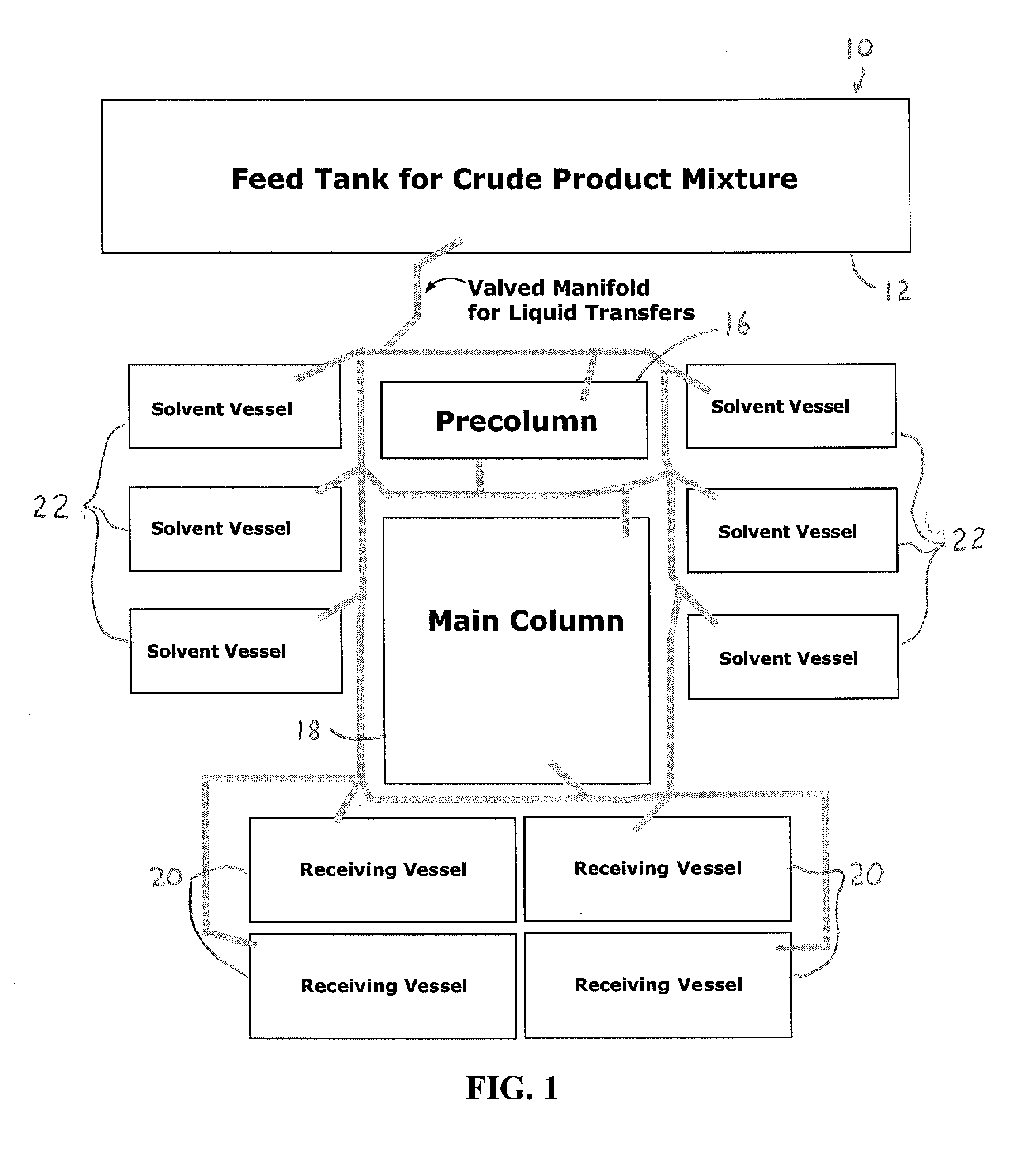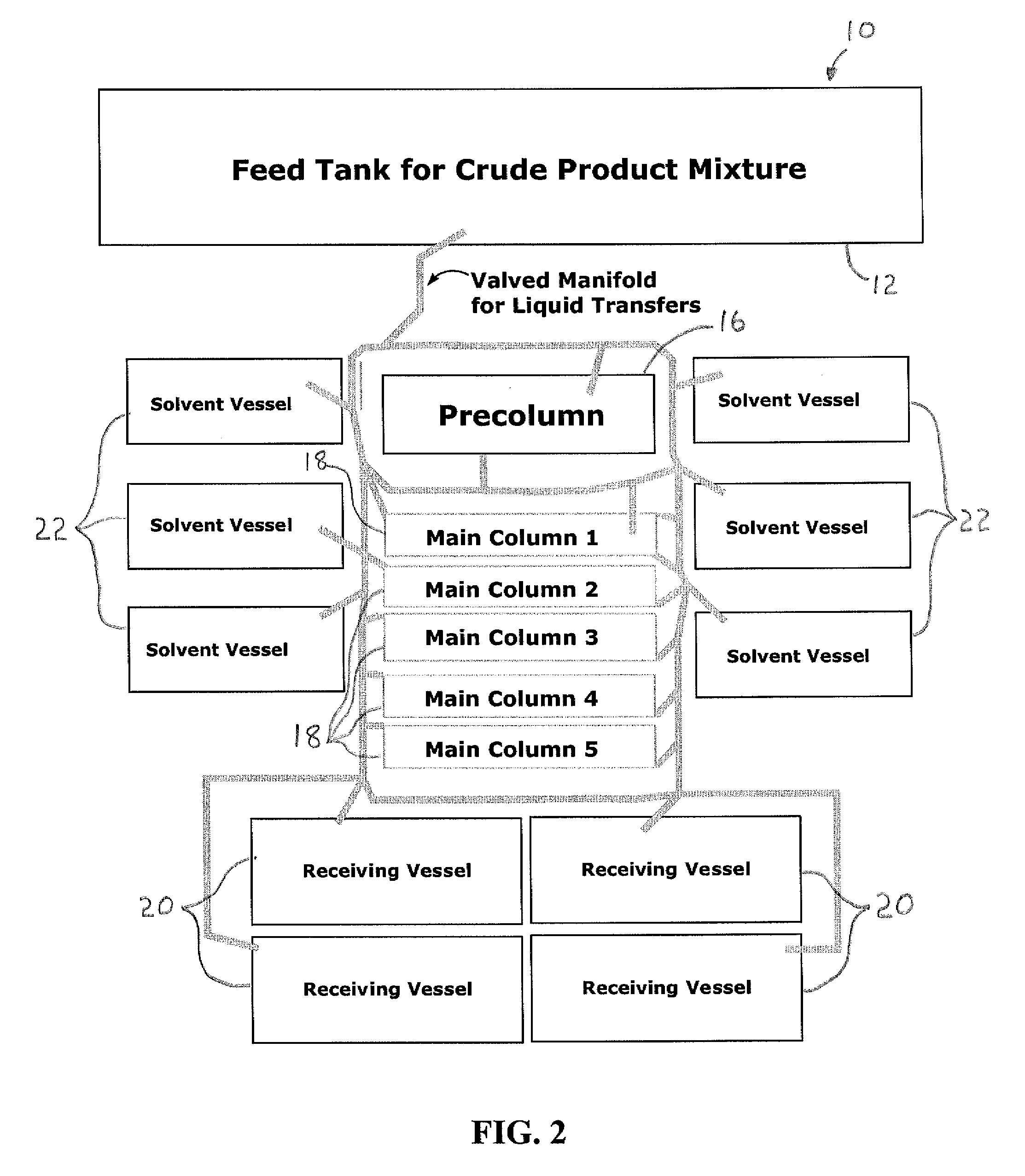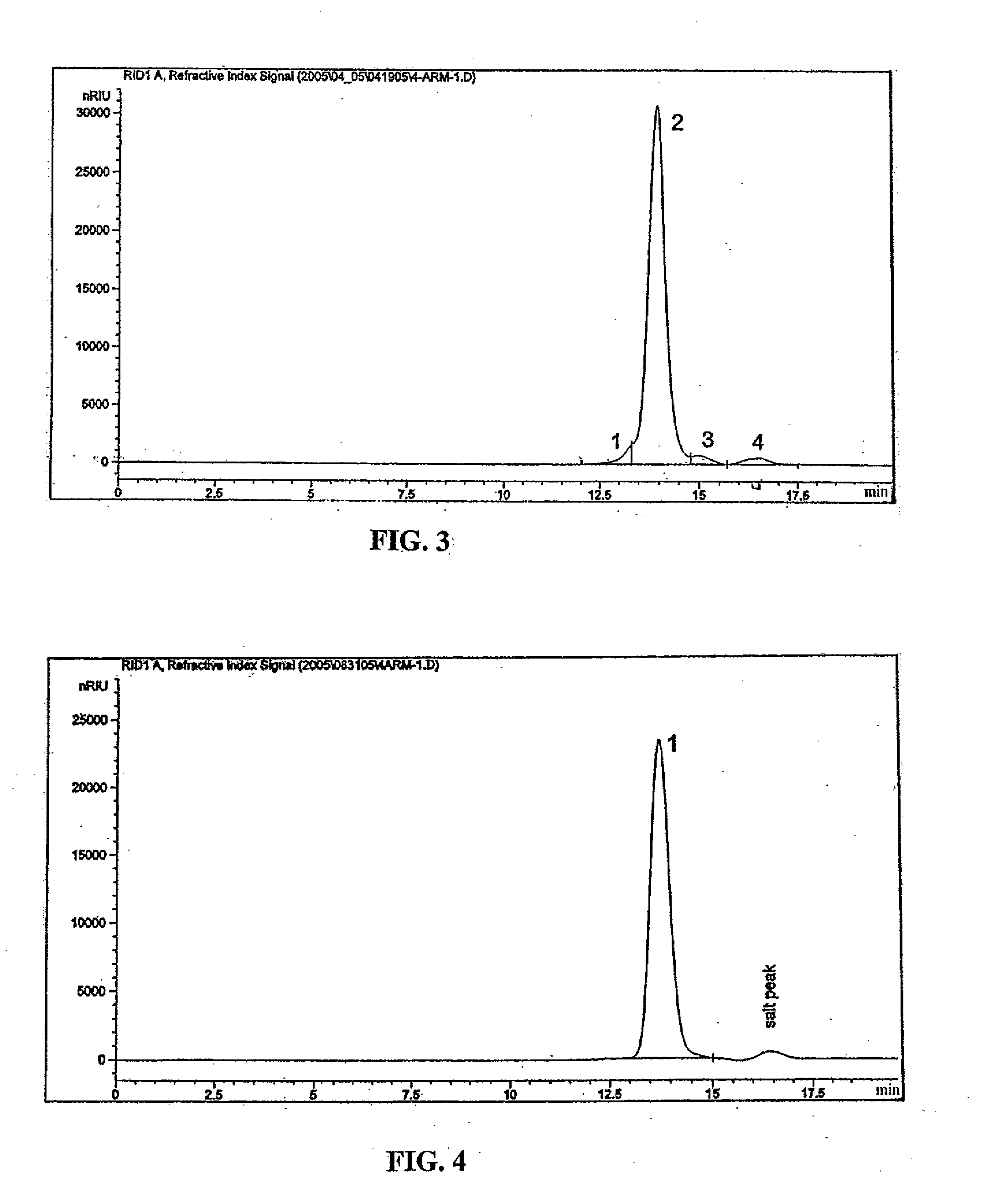Method for Preparing Branched Functionalized Polymers Using Branched Polyol Cores
a functionalized polymer and polymer technology, applied in the direction of organic active ingredients, organic chemistry, synthetic polymer active ingredients, etc., can solve the problems of complex conjugation of polymer to active agent, difficulty in concomitant increase in synthetic complexity and/or purification, and difficulty in multi-arm polymers truly useful
- Summary
- Abstract
- Description
- Claims
- Application Information
AI Technical Summary
Benefits of technology
Problems solved by technology
Method used
Image
Examples
example 1
3ARM-PEG(15 KDa)-mono-butanoic acid
A. Pentaerythritol ethoxylate-mono-butanoic acid
[0210]
[0211] A solution of pentaerythritol ethoxylate (15 / 4 EO / OH) (100 g, 0.5019 OH equivalents), in toluene (200 ml) was azeotropically dried by distilling off toluene under reduced pressure. The dried pentaerythritol ethoxylate was dissolved in anhydrous toluene (180 ml) and a 1.0 M solution of potassium tert-butoxide in tert -butanol (120 ml, 0.120 moles) and 1-(3-brompropyl)-4-methyl-3,6,7-trioxabicyclo[2,2,2]octane (26.0 g, 0. 104 mole) were added. Next, the mixture was stirred at 80° C. overnight under an argon atmosphere. After cooling to room temperature, the mixture was filtered and the solvents were distilled off under reduced pressure. The crude product was dissolved in 300 ml deionized water. The pH of the solution was adjusted to 2 with 5-% phosphoric acid and the solution was stirred 15 minutes at room temperature. Next the pH was readjusted to 12 with 1M sodium hydroxide and the solu...
example 2
4ARM-PEG(20 KDa)-mono-butanoic acid
A. Pentaerythritol ethoxylate-mono-PEG(5 KDa)-butanoic acid, methyl ester
[0225]
[0226] A solution of pentaerythritol ethoxylate (3 / 4 EO / OH) (25 g, 0.370 OH equivalents), in toluene (100 ml) was azeotropically dried by distilling off toluene under reduced pressure. The dried pentaerythritol ethoxylate was dissolved in anhydrous acetonitrile (100 ml) and anhydrous pyridine (4.2 ml) and di-succinimidyl carbonate (9.5 g, 0.037 moles) were added and the mixture was stirred overnight at room temperature under argon atmosphere. Next PEG(5 KDa)-α-amine-ω-butanoic acid, methyl ester (20 g, 0.0040 moles) and triethylamine were added and the reaction mixture was stirred overnight at room temperature under argon atmosphere. The solvent was distilled off under reduced pressure. The crude product was dissolved in dichloromethane (20 ml) and isopropyl alcohol (700 ml) was added at room temperature. The precipitated product was filtered off and dried under vacuum...
PUM
| Property | Measurement | Unit |
|---|---|---|
| Fraction | aaaaa | aaaaa |
| Fraction | aaaaa | aaaaa |
| Fraction | aaaaa | aaaaa |
Abstract
Description
Claims
Application Information
 Login to View More
Login to View More - R&D
- Intellectual Property
- Life Sciences
- Materials
- Tech Scout
- Unparalleled Data Quality
- Higher Quality Content
- 60% Fewer Hallucinations
Browse by: Latest US Patents, China's latest patents, Technical Efficacy Thesaurus, Application Domain, Technology Topic, Popular Technical Reports.
© 2025 PatSnap. All rights reserved.Legal|Privacy policy|Modern Slavery Act Transparency Statement|Sitemap|About US| Contact US: help@patsnap.com



